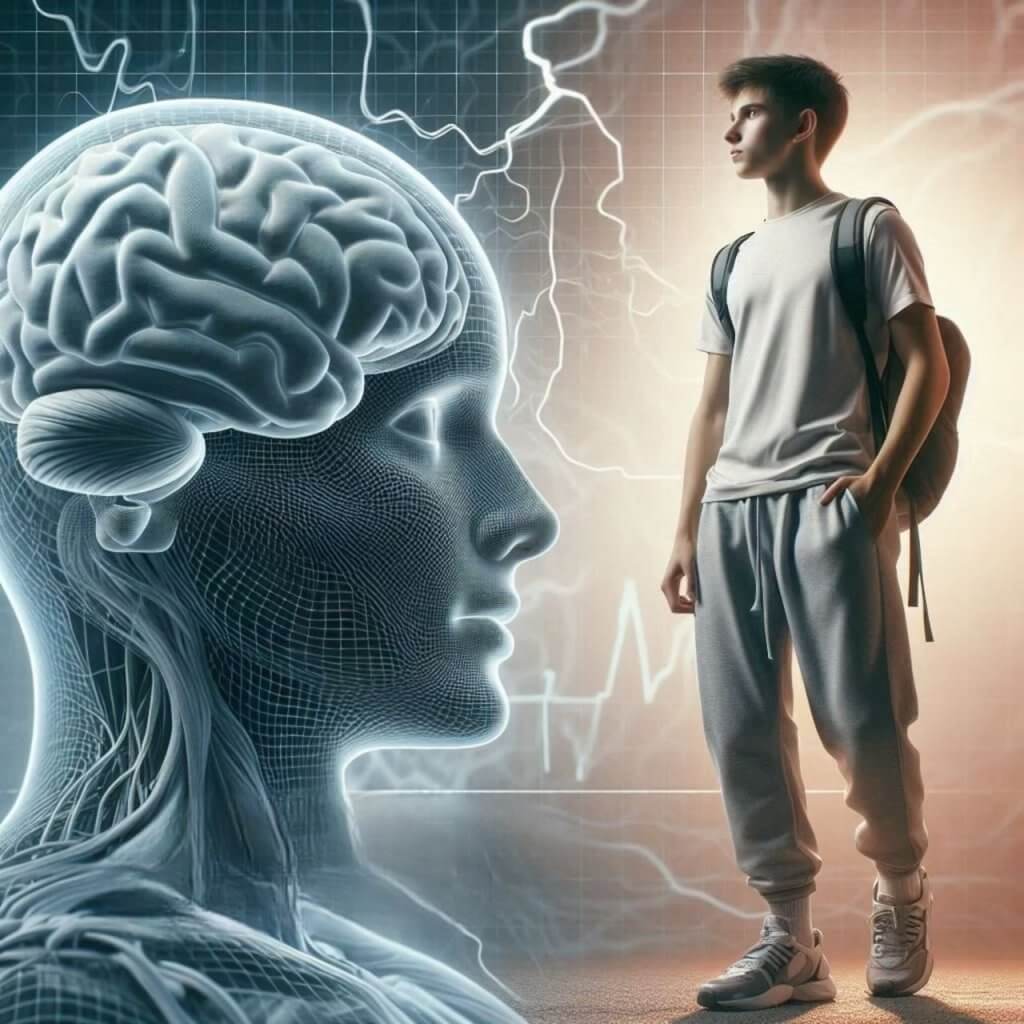
ADHD and Exercise: Move to Focus
Attention-deficit/hyperactivity disorder (ADHD) represents one of the most prevalent neurodevelopmental conditions in modern psychiatry, affecting approximately 4% of adults and 5-8% of children worldwide. Despite advances in pharmacological and psychological interventions, many patients continue to experience significant functional impairment across multiple life domains. This clinical reality has prompted increasing research interest in complementary approaches that address the neurobiological foundations of ADHD while enhancing psychological well-being.
Physical exercise has emerged as a particularly promising adjunctive intervention, supported by converging evidence from neuroscience, cognitive psychology, and clinical psychiatry. This cross-disciplinary research reveals that strategic physical activity can directly influence the very neurobiological systems implicated in ADHD pathophysiology—notably dopaminergic and noradrenergic transmission, prefrontal cortex function, and neural network connectivity. Perhaps more compelling from a clinical perspective is that these neurobiological changes translate into measurable improvements in executive functioning, emotional regulation, and psychological resilience.
This article examines the psychological impact of exercise on ADHD from a clinical vantage point, integrating current neurobiological understanding with practical therapeutic applications. We will explore how different forms of physical activity affect specific psychological processes relevant to ADHD, considerations for optimal implementation within treatment frameworks, and the implications for evolving psychiatric practice. Throughout, we emphasize that while exercise represents a powerful complementary intervention, it functions most effectively when incorporated within comprehensive, individualized treatment plans developed and monitored by qualified healthcare professionals.
The Neuropsychological Basis of ADHD
Current neuropsychological research reveals that ADHD involves altered functioning in the brain’s prefrontal cortex and its connections to other brain regions. These neurobiological differences affect executive functions such as working memory, cognitive flexibility, and inhibitory control. Importantly, these differences don’t indicate a “broken” brain but rather a different neurological profile that influences psychological processes in unique ways.
Clinically, we observe that this neuropsychological profile creates a brain that requires different levels of stimulation to achieve optimal functioning—what Harvard psychiatrist Dr. John Ratey describes as an “understimulated” brain. For insights into how these differences manifest across genders, our article on ADHD in Women: Symptoms, Diagnosis, and Treatment provides valuable perspective.
Exercise as a Psychological Intervention

From a psychiatric standpoint, physical exercise represents a powerful non-pharmacological intervention that directly addresses the neurobiological underpinnings of ADHD. When patients with ADHD engage in exercise, we observe several psychological benefits:
- Enhanced Executive Functioning: Clinical studies demonstrate improvements in cognitive inhibition, working memory, and planning abilities following regular exercise.
- Improved Emotional Regulation: Exercise helps modulate emotional responses by affecting both limbic system function and prefrontal control mechanisms, reducing emotional lability often seen in ADHD.
- Reduced Psychological Comorbidities: Regular physical activity has shown efficacy in reducing symptoms of anxiety and depression—conditions that frequently co-occur with ADHD.
- Increased Self-Efficacy: Successful engagement in physical activities can build psychological resilience and improve self-concept, countering the negative self-perception many ADHD patients develop.
For parents seeking to understand these benefits in the context of raising children with ADHD, our guide on Navigating the Journey: Parenting a Child with ADHD and Autism offers practical applications.
Case Study: Psychological Transformation Through Exercise Integration

Consider the case of 14-year-old Alex, who presented to our clinic with severe ADHD symptoms, diminished self-esteem, and academic difficulties despite pharmacological intervention. His psychological assessment revealed significant executive function deficits and emotional dysregulation.
When a structured exercise program was incorporated into his treatment plan, the psychological transformation was remarkable. Beyond improved attention, Alex experienced enhanced mood stability, reduced anxiety around academic performance, and greater social confidence. His mother noted, “The psychological change was profound—he not only completed homework more efficiently but approached it with less emotional distress and greater self-assurance.”
This case exemplifies findings from a 2022 randomized controlled trial demonstrating significant improvements in psychological well-being when combining aerobic exercise with cognitive interventions. For additional clinical insights, our article documenting RJ’s ADHD and Autism Journey provides valuable perspective.
Psychological Mechanisms: How Different Exercise Types Affect ADHD
From a psychiatric perspective, different forms of exercise engage distinct psychological processes relevant to ADHD management:
- High-Intensity Interval Training (HIIT): This approach optimizes catecholamine release (dopamine and norepinephrine), directly addressing the neurochemical deficits associated with ADHD. Psychologically, this can produce heightened alertness and improved cognitive control.
- Complex Coordination Exercises: Activities requiring coordinated movements (martial arts, dance) engage multiple brain regions simultaneously, enhancing neural integration. Psychologically, this translates to improved cognitive processing and attentional control.
- Mindful Movement Practices: Activities combining physical movement with attentional focus (yoga, tai chi) help develop metacognitive skills and body awareness—psychological resources that support self-regulation.
For personalized approaches to exercise integration in ADHD management, explore our comprehensive ADHD services for adults and ADHD services for children.
Clinical Considerations: Optimal Timing of Exercise Interventions
From a treatment perspective, strategic timing of exercise can maximize psychological benefits:
- Morning Exercise Protocol: Clinical observations suggest that morning physical activity creates a window of enhanced cognitive function lasting 2-3 hours—a phenomenon likely related to optimized cortisol and catecholamine profiles.
- Pre-Cognitive Task Exercise: Brief physical activity before challenging cognitive work activates the prefrontal cortex, effectively “priming” the brain for sustained attention.
- Interval-Based Movement: Structured movement breaks throughout the day can prevent the depletion of cognitive resources and help maintain optimal arousal levels.
For comprehensive assessment and personalized implementation of these strategies, consider our specialized ADHD assessment for adults and ADHD assessment for children.
Rethinking Psychiatric Treatment Models for ADHD
The robust evidence for exercise’s psychological benefits in ADHD raises important clinical questions:
- How might integrated treatment protocols that combine pharmacotherapy, psychotherapy, and structured physical activity optimize outcomes?
- Should clinical guidelines more explicitly incorporate exercise prescriptions alongside traditional psychiatric interventions?
- Could targeted exercise interventions reduce medication requirements for some patients, minimizing exposure to potential side effects?
For important considerations regarding medication management, our article on ADHD and Its Medications: Cardiovascular Risk Considerations provides crucial information.
A Holistic Psychiatric Approach: Exercise as Part of Multimodal Treatment

From a contemporary psychiatric perspective, exercise represents not merely an adjunctive intervention but a core component of comprehensive ADHD management. Clinically, we observe that physical activity engages the ADHD brain in ways that complement both pharmacological and psychological treatments.
Many patients report that regular exercise creates a sense of psychological normalcy—a state where executive functions operate more optimally and emotional regulation improves. This suggests that ADHD may be conceptualized not only as a disorder of attention but also as a condition involving physical and psychological regulation that responds positively to movement.
For an overview of our comprehensive treatment approach, explore our ADHD assessment services.
Clinical Recommendations and Therapeutic Considerations
As psychiatric professionals, we emphasize that exercise should be integrated within a comprehensive treatment framework. While the psychological benefits are substantial, exercise alone is rarely sufficient for comprehensive ADHD management. Consultation with qualified healthcare providers remains essential to ensure proper diagnosis, appropriate medication management, and individualized treatment planning.
The optimal approach typically involves:
- Comprehensive Psychiatric Assessment: Establishing accurate diagnosis and identifying comorbid conditions.
- Multimodal Treatment Planning: Combining evidence-based interventions, potentially including pharmacotherapy, psychotherapy, behavioral interventions, and structured physical activity.
- Ongoing Monitoring and Adjustment: Regular clinical evaluation to assess treatment response and modify interventions as needed.
Practical Clinical Applications
From a therapeutic standpoint, even modest exercise integration can yield significant psychological benefits:
- Brief Activity Sessions: Short, 10-minute bouts of aerobic activity can produce immediate improvements in attention and mood.
- Movement-Based Cognitive Strategies: Encouraging active learning techniques (standing, walking while reviewing material) can enhance information processing.
- Structured Movement Breaks: Implementing the “Pomodoro technique” with movement during break periods can optimize cognitive stamina.
- Nature-Based Activity: Combining physical activity with natural environments provides additional psychological benefits, reducing stress and enhancing attention restoration.
The Future of ADHD Treatment: A Psychiatric Perspective
Looking ahead, we anticipate several promising developments in the integration of exercise within psychiatric care for ADHD:
- Precision Exercise Prescriptions: Tailored exercise recommendations based on ADHD subtype, comorbidity profile, and individual response patterns.
- Technology-Assisted Implementation: Digital tools to support adherence to exercise interventions and track psychological outcomes.
- Integrated Clinical Guidelines: Updated psychiatric protocols that formalize exercise as a first-line intervention alongside established treatments.
For comprehensive information about our range of psychiatric services, visit Our Services.
Conclusion: A Balanced Clinical Approach
From a psychiatric perspective, the ADHD brain represents not a deficit but a different neuropsychological profile with unique strengths and challenges. Movement and exercise engage this brain in ways that optimize psychological functioning and enhance quality of life. By integrating structured physical activity within comprehensive treatment plans, we can help patients develop more effective self-regulation strategies and experience greater well-being.
The key insight for clinicians and patients alike is that addressing ADHD effectively requires attention not only to cognitive processes but also to the powerful mind-body connection that exercise activates. Through this integrated approach, we can help individuals with ADHD achieve their full potential across all domains of functioning.



